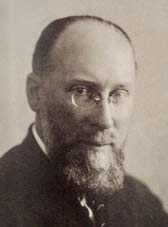

In the 30s of the XX century to convey the simplicity and joy of life, using chamber-intimate subjects, it turned out to be a challenge. The art of that period of propaganda – a man of the young Soviet state resembles an ancient statue: powerful, beautiful and cold. Such heroes look at us from the paintings of Deineka or, for example, Samokhvalov. The works of Nikolai Tyrsa are of a completely different kind, his paintings are inhabited by ordinary people; a certain etude, incompleteness gives his painting a special sensual atmosphere. The artist considered it necessary to preserve the individual handwriting: “The quality of the picture can be in the opposite relation to the time spent”.
Tyrsa Nikolai Andreevich was born May 9, 1887 in the family of a Cossack, an officer of the Kuban Cossack army. In 1905 he began to study architecture in St. Petersburg, but he did not finish it. At the same time, Nikolai attended the Zvantseva Art School, where such famous masters as Dobuzhinsky and Bakst taught. Tyrsa, throughout his life, considered himself the continuer of the traditions of the “World of Art”.
Nikolai Tyrsa went on creative trips and participated in the restoration of old paintings in the Ferapontov Monastery, churches in Novgorod, Yaroslavl and other cities.
In 1916, the artist was drafted to the front, served in the automotive battalion. The revolutionary tendencies did not bypass him, Nikolai Tyrsa joined the “Union of Youth” and actively engaged in political activities. He fervently supported the revolution, seeing in it new opportunities, like many of his contemporaries, the artist became the organizer of the association “Freedom to Art”, was one of the founders of VHUTEMAS. In 1918, Tyrse was commissioned to issue Petrograd for the first anniversary of October. During this period, he did a lot of social activities, participated in many exhibitions, including international ones.
But already in the mid-twenties, Nikolay Tyrsa departs from active social activities, taking up book graphics and teaching. He illustrated the works of Pushkin, Leo Tolstoy, Lermontov, became a member of the Academic Council of the Russian Museum, deepened in scientific work.
June 15, 1941 in St. Petersburg opened a personal exhibition of Nikolai Tyrsa. The artist did not survive the blockade. In early 1942, he was already dying from St. Petersburg, he died in Vologda on February 10.